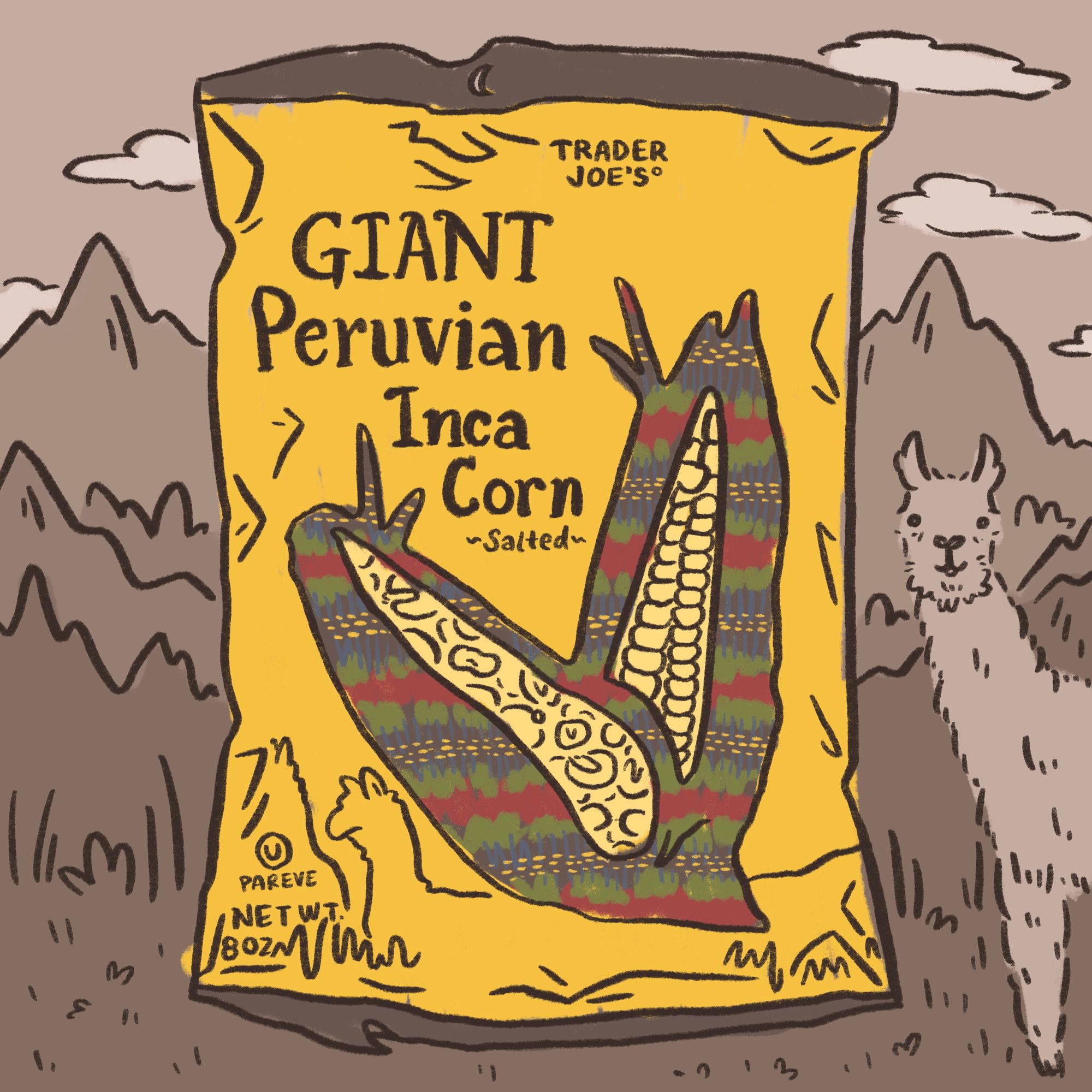Rants and Raves: When Trader Joe’s Gets Corny

Like many Amherst students, I often use Trader Joe’s snacks and frozen meals to supplement my poor nutritional intake on Val’s pierogi or tequila lime chicken nights. I must admit: I am a Trader Joe’s lover. Its snacks aren’t too pricey, and its frozen meals are incredibly flavorful in comparison to Val’s bland meals. It also provides me with a breadth of foods that I otherwise would only have access to at a restaurant.
However, the same variety of flavors is also sometimes accompanied by questionable product design and culturally inaccurate recipes. In my semi-monthly special snack trips to the store, I find myself walking around the aisles and apprehensively staring at packages of culturally-coded snacks and wondering how appropriate the descriptions are. I’ve often stopped to stare at the “Philly Cheesesteak Bao Buns” in half-disgust, half-curiosity. As I eat my Trader Joe snacks, I can’t help but feel like I’m complicit in their lack of cultural respect, understanding that these foods are not truly representative of the meals they’re inspired by.
One of the snacks I’ve suspiciously peered at through the years are the “Giant Peruvian Inca Corn Snacks.” For starters, this name reads like a nonsensical string of words. Are the corn snacks giant, or is the corn itself? Or is it Peru that is giant? Is it Incan or Peruvian? Why couldn’t they choose one or the other? Why are the Incas relevant to the name of the snack?
I grew up eating fried white corn at Peruvian restaurants, where it is served as an appetizer and as a side for ceviche. It’s crunchy, salty, delicious and filling enough to keep you satisfied before a meal while being light enough to not fill you up like bread does. Fried white corn is traditionally served hot, and whenever it gets cold, it’s almost inedible — which is why a cold version of the snack was alarming. These concerns caused me to avoid picking this snack off the aisle, until a bout of curiosity and generous thinking made me want to try it out last week. Perhaps I was also hoping that this snack might provide me with a little piece of comfort.
When I opened the bag, I was hit with the realization that these snacks were oddly … puffed? Whereas normal fried corn is browned by toasting over a fire, this corn seemed to have a fluffy quality to them. When I tried them, I discovered that they were their own type of delicious, but that they had nothing to do with the hot snack I enjoyed as a child.
After finishing the bag, I looked at the back and saw the most gut-wrenching little blurb, detailing the origin of the bag: the “Sacred Valley of the Incas, Urubamba” –– a direct quotation from Wikipedia. Apparently, “you no longer need a llama to hit the high trails to track down” fried white corn, which actually exists in every single Peruvian restaurant that has ever existed.
This rant is by no means comprehensive to the issues that surround Trader Joes’ borderline appropriation of foods. Neither is it the most pressing issue that needs to be written about. However, there is an undeniably conflicting feeling that eating these snacks as a college student looking for a piece of home provides.